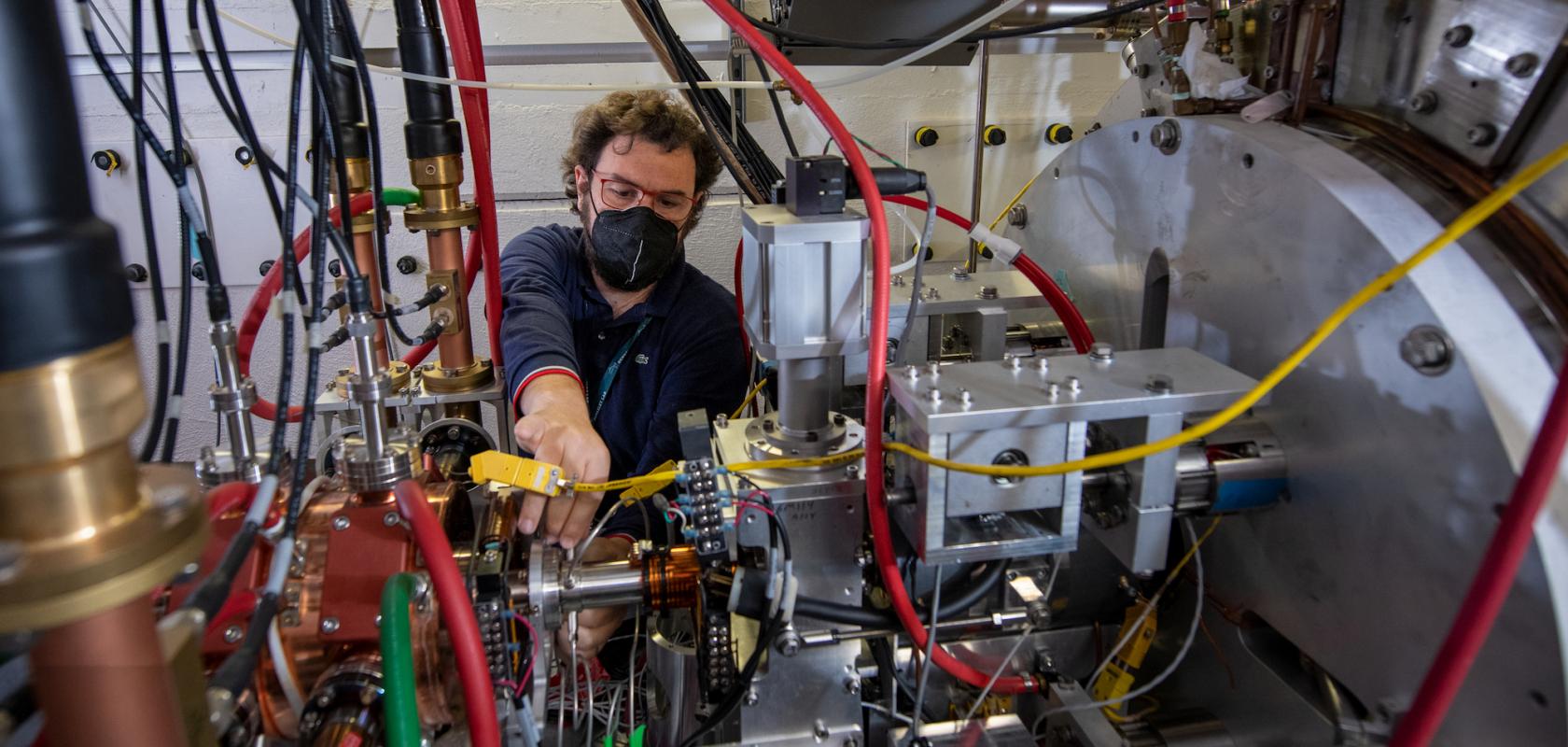Scientists at Berkley Lab are creating algorithms that control particle beams and lasers using a new machine-learning platform.
Their work could impact multiple applied fields of particle accelerators, ranging from autonomous operations in industrial and medical settings to increased precision in scientific applications, such as linear colliders and ultrafast free electron lasers.
Daniele Filippetto, a staff scientist at the Accelerator Technology and Applied Physics Division (ATAP) at Berkeley Lab and deputy director of the Berkeley Accelerator Controls and Instrumentation Program (BACI) program, comments: ‘We are trying to teach physics to a chip, while at the same time providing it with the wisdom and experience of a senior scientist operating the machine.
Filippetto and colleagues at the Department of Energy’s Lawrence Berkeley National Laboratory (Berkeley Lab) developed the setup to automatically compensate for real-time changes to accelerator beams and other components, such as magnets. Their machine learning approach is also better than contemporary beam control systems at both understanding why things fail, and then using physics to formulate a response. A paper describing the research was published late last year in Nature Scientific Reports.
The novel technique was demonstrated at the High Repetition-Rate Electron Scattering Apparatus (HiRES) accelerator at Berkeley Lab in collaboration with researchers from Los Alamos National Laboratory and UCLA. The main application of the HiRES beamline is performing structural dynamics experiments on novel quantum materials. The instrument has contributed to numerous scientific discoveries such as performing the first-ever ultrafast electron diffraction studies of optical melting of tantalum ditelluride, a material with interesting and potentially useful properties. Now, this novel machine is showing its usefulness in developing new methods for controlling broad classes of accelerators.
Particle accelerators produce and accelerate beams of charged particles, such as electrons, protons, and ions, of atomic and subatomic size. As the machines become more powerful and complex, control and optimisation of the particle or laser beam become more important to meet the needs of scientific, medical, and industrial applications.
The researchers are paving the way for the global development of machine learning tools. These tools provide a platform to develop smart algorithms that react quickly and precisely to unforeseen perturbances, learn from their mistakes, and adopt the best strategy for reaching or maintaining the target beam setpoint.
The tools they are developing have the added advantage of providing an accurate model of the overall behaviour of a particle accelerator system, no matter the complexity. Controllers can use these new and improved capabilities to make more effective real-time decisions.
The present focus of Filippetto’s work is using the power and prediction of machine learning tools to increase the overall stability of particle beams. ‘If you can predict the beam properties with an accuracy that surpasses their fluctuations, you can then use the prediction to increase the performance of the accelerator,’ states Filippetto. ‘Real time knowledge of key beam parameters would have an enormous impact on the final accuracy of experiments.’


